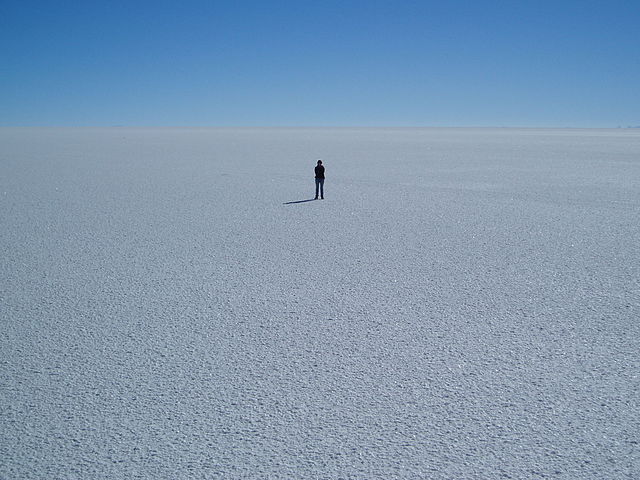Salt pan
flat expanse of ground covered with salt and other minerals From Wikipedia, the free encyclopedia
Remove ads
A salt plain (also known as a salt pan or salt flat) is a flat area of ground covered with salt and other minerals. They are usually purely white. They are found in desert areas. In areas where salt plains form, the rate of evaporation (how quickly water dries up) is faster than the rate of precipitation (how often rain falls). A salt plain is formed where a lake or pond would otherwise be found. When the water dries up, the minerals stay left behind on the suface of the ground.[1] Over thousands of years, the minerals (usually salts) build up on the surface.

Large salt plains are common in the Sahara Desert, the Kalahari Desert, the Rann of Kutch, the western United States and the central deserts of Australia. The Altiplano in Bolivia has the world's largest salt plan, the Salar de Uyuni.
Remove ads
Related pages
References
Other websites
Wikiwand - on
Seamless Wikipedia browsing. On steroids.
Remove ads
